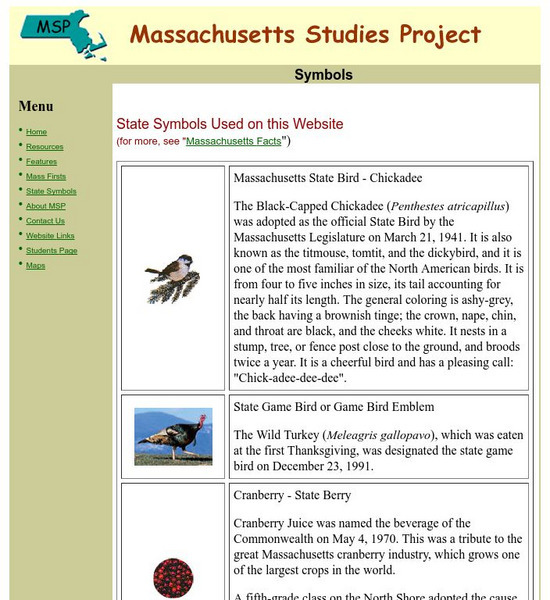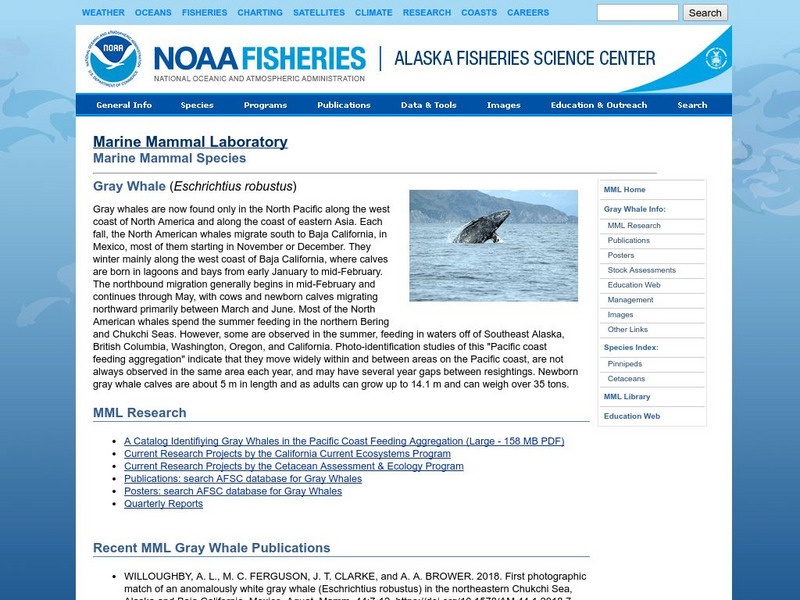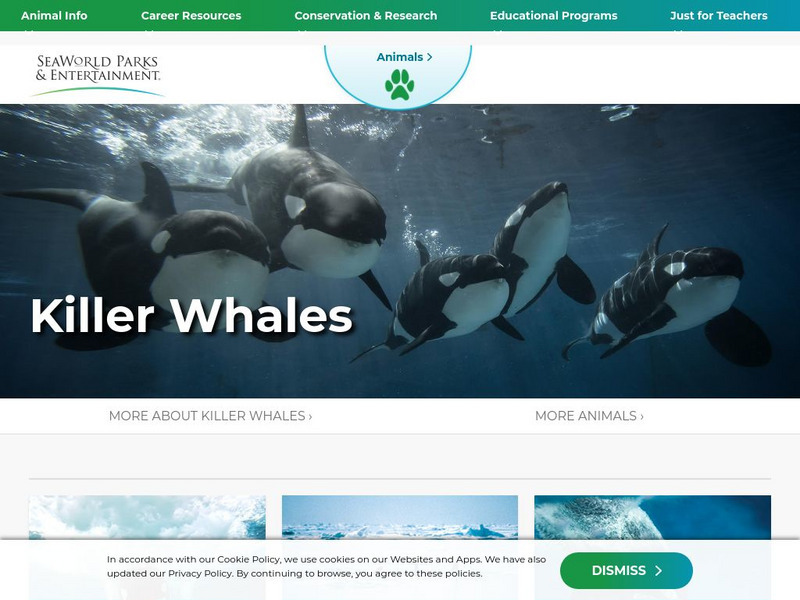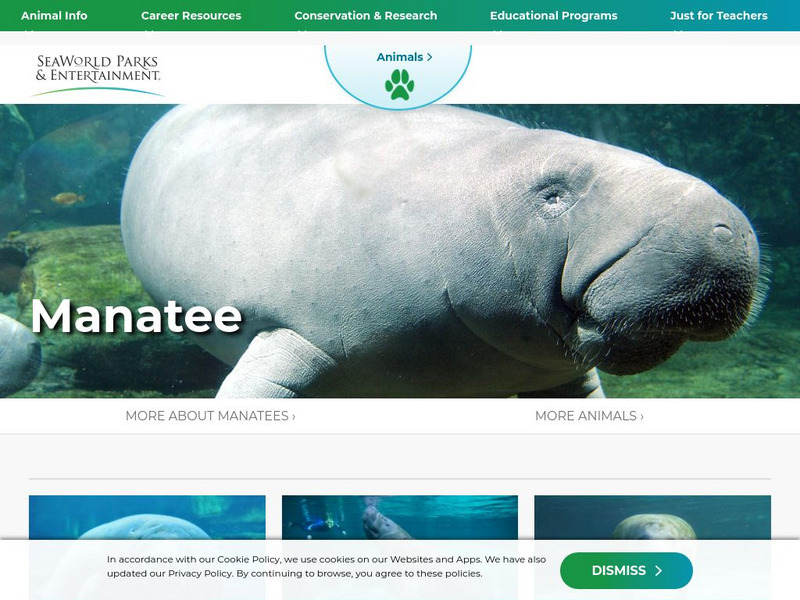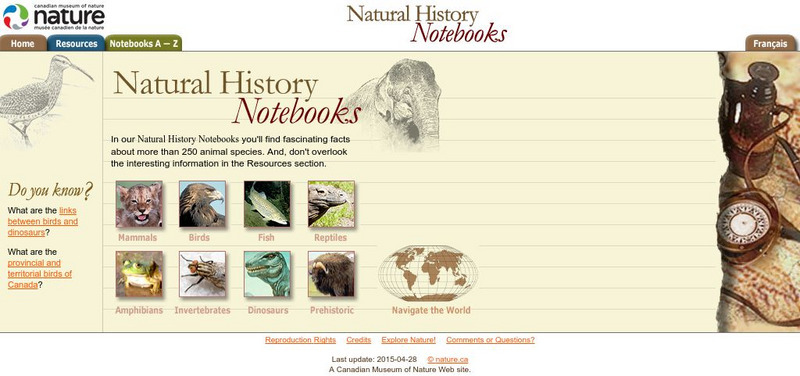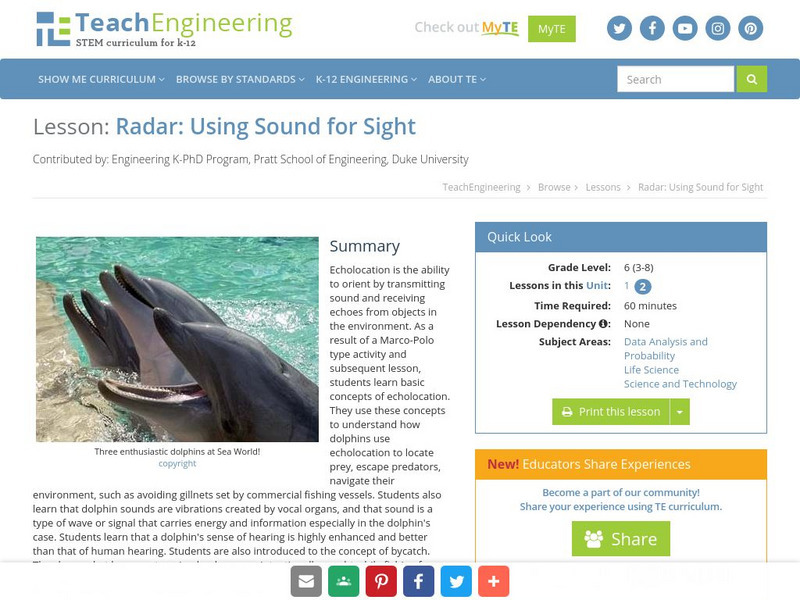PBS
Pbs Nature: Dolphin
Explore the world of marine life through the eyes of dolphins when you visit this clear and concise resource. This site features information on where and how dolphins live and other fun facts. Teachers can use this type of site to help...
Smithsonian Institution
National Museum of Natural History: Ocean Portal: Life at the Poles
The poles of the earth are often grouped together, however, they are very different. This article is a companion to the exhibit at the Smithsonian. You will learn about adaptations that organisms must make and ways that we affect the...
TED Talks
Ted: Ted Ed: Why Do Whales Sing?
Stephanie Sardelis decodes the evocative melodies composed by the world's largest mammals, whales. [5:12]
Texas Instruments
Texas Instruments: Jason: Pinniped Body Shape Conserving Warmth
From Shore to Sea: To survive in cold ocean environments an organism's body must be adapted to life under water. A body will cool very quickly when in contact with water. The body shape of an organism is one adaptation that helps to...
Other
Whale Net: Satellite Tagging Data, Maps and Information
Information on what satellite tags are, how they work, and how they are used for research on whales. Also discusses several studies they have done using this equipment, and how this information can be used in conservation work. Great...
NSTATE
California State Symbols
Find out about the official California state symbols and when they were adopted. Click on the words to see a picture and get more information.
NSTATE
Alaska State Symbols and Emblems
Find out all about the state symbols and emblems of Alaska. Clicking on the words under the heading "Symbol/Emblem" will usually provide a picture and more information. The date the symbol was adopted is also included.
State of Florida
Florida Department of State: State Symbols
Learn about all of Florida's state symbols on this colorful page. Click on the symbol for a larger picture and more information.
Enchanted Learning
Enchanted Learning: California
Enchanted Learning provides this fact sheet for California as well as a state map, pictures, state symbols, and links to related information.
Sea World Parks & Entertainment
Sea World: Bottlenose Dolphins
Outlines the characteristics of the bottlenose dolphin, including classification, habitat, behaviors, and conservation.
Sea World Parks & Entertainment
Sea World: Career Resources
Site sponsored by Seaworld and Busch Gardens discusses what it's like to work with animals at their parks as well as zoo careers in general.
Other
Massachusetts State Symbols
A thorough collection of the symbols of the state of Massachusetts including a picture, information about the symbol, and date of adoption.
NSTATE
Hawaii State Symbols
Learn all about Hawaii's state symbols including the state bird, flower, fish, dance, flag, and more. Click on the symbol name to see a picture and learn more information.
University of California
Uci: Issue Guide: Trade Embargoes, Seals, and More
Trade embargo is first defined and then discusses seal embargoes in depth. This gives a good overview of how embargoes work.
Canadian Museum of Nature
Canadian Museum of Nature: Hooded Seal
A brief overview of the hooded seal with quick facts on size, distribution, diet, an explanation of the name "hooded".
TED Talks
Ted: Ted Ed: Why Are Blue Whales So Enormous?
Blue whales are the largest animals on the planet, but what helps them grow to the length of a basketball court? Asha de Vos explains why the size of krill make them the ideal food for the blue whale. [5:21]
NOAA
Noaa: Nmml: Detailed Information About Gray Whales
Your questions about gray whales are answered at this site from the National Marine Mammal Laboratory. Learn where the whales live, what they eat, how they communicate and more.
Sea World Parks & Entertainment
Sea World: Killer Whales
Outlines the characteristics of the killer whale, including classification, habitat, behaviors, and conservation. Helps students identify with whales with a list of "Books for Young Readers." Information at a level of upper intermediate...
Sea World Parks & Entertainment
Sea World: Manatees
Outlines the characteristics of the manatee, including classification, habitat, behaviors, and conservation. Helps students identify with manatees with a list of "Books for Young Readers." Information at a level of upper intermediate or...
Canadian Museum of Nature
Canadian Museum of Nature: Natural History Notebooks
This site from the Canadian Museum of Nature, a natural history museum, provides short information blurbs and fun facts on over 240 different common animals categorized by type (mammals, fish, reptiles, invertebrates, amphibians,...
Smithsonian Institution
National Museum of Natural History: Hall of Mammals: Beaver
A brief overview of the beaver and accompanying photos demonstrate the physical adaptations that allow this animal to eat and live in its habitat.
PBS
Pbs Nature: Otters
Discover more about how otters live, what they eat and how they socialize when you visit this informative resource. This condensed site will benefit students who need help narrowing their research information.
Ducksters
Ducksters: Dolphins
Kids learn how dolphins eat, sleep, and live together. Bottlenose dolphins and orcas travel the ocean in pods.
TeachEngineering
Teach Engineering: Sound for Sight
Echolocation is the ability to orient by transmitting sound and receiving echoes from objects in the environment. As a result of a Marco-Polo type activity and subsequent lesson, students learn basic concepts of echolocation. They use...
Other popular searches
- Marine Mammals Sharks
- Marine Mammals Populations
- Marine Mammals With Blubber
- Marine Mammals Give Birth
- Marine Mammals Msg
- Marine Mammals Withblubber
- Marine Mammals Assignment
- Bolivares Marine Mammals
- Strandings of Marine Mammals
- Marine Mammals Msfca
- Morbillivirus Marine Mammals
- Standings of Marine Mammals













